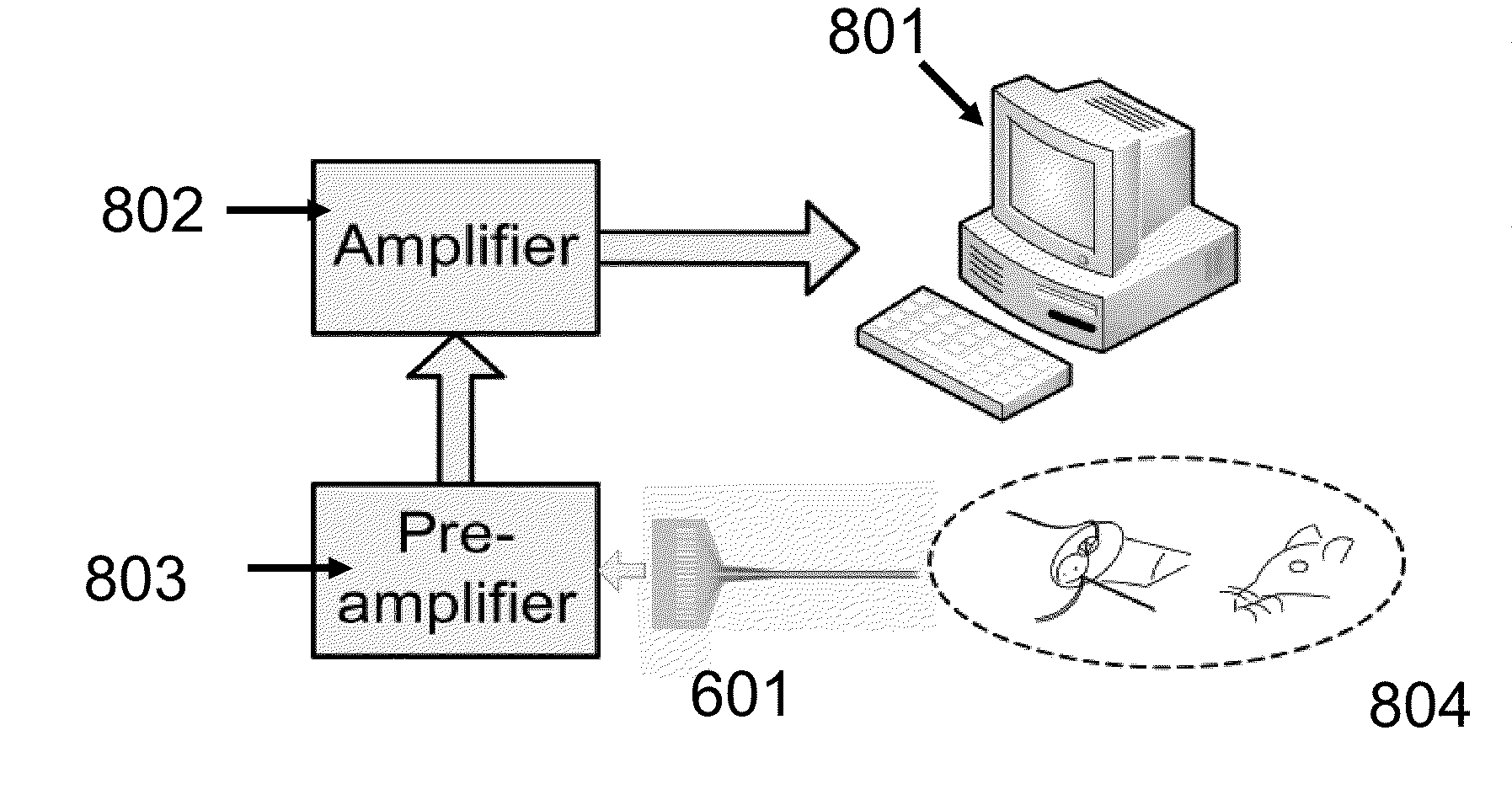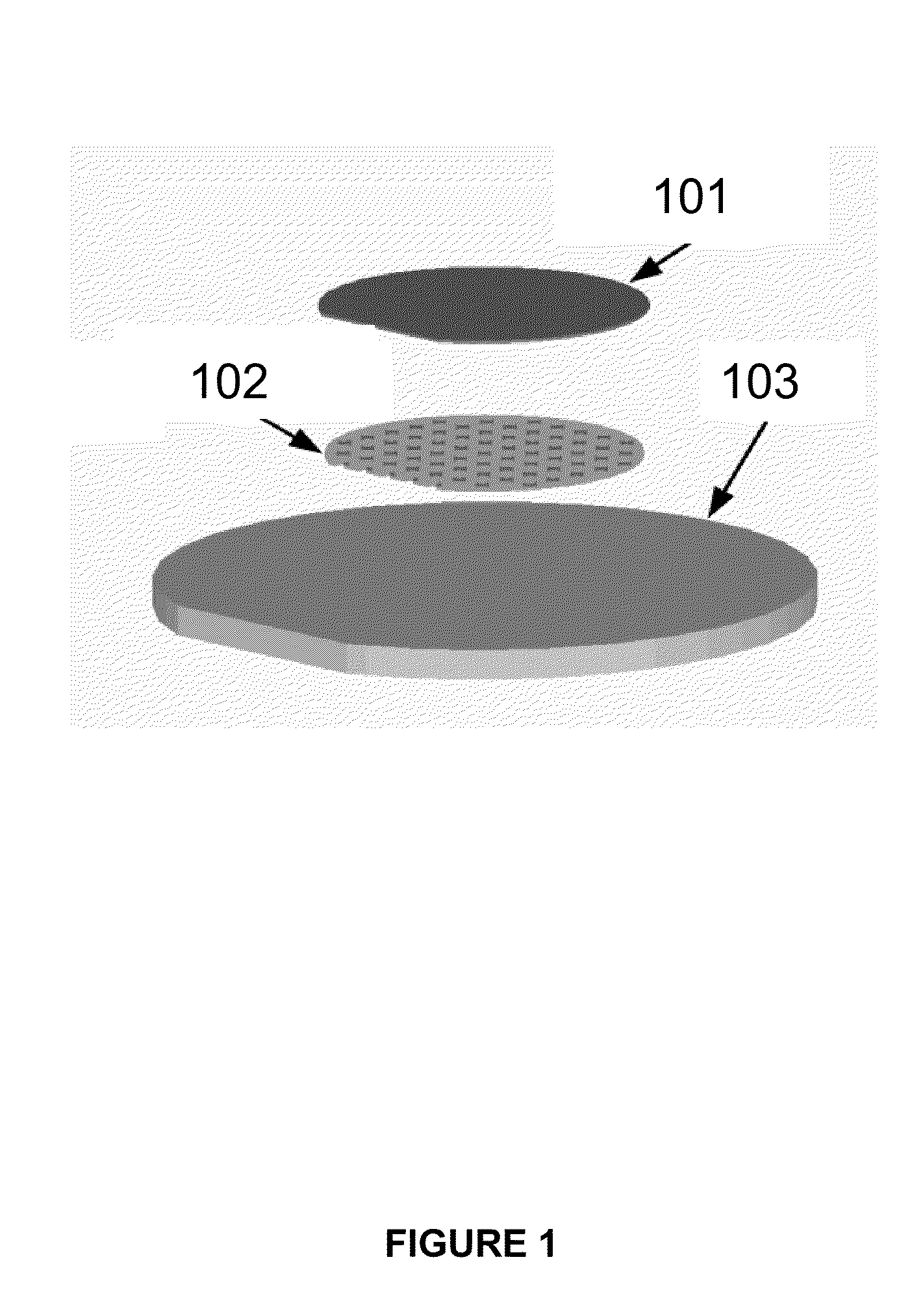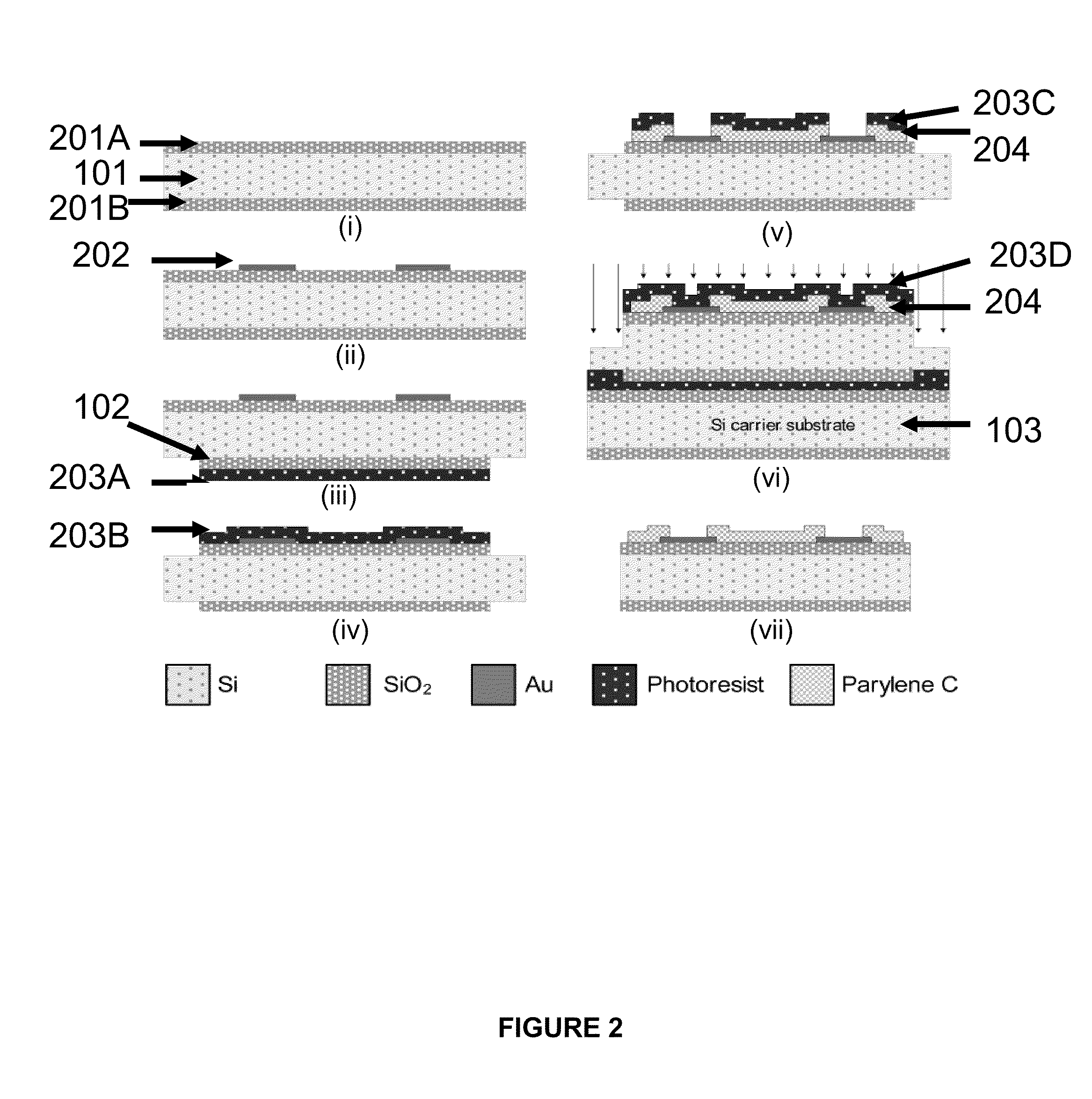Micromachined neural probes
a neural probe and micromachine technology, applied in the field of microelectromechanical systems, can solve the problems of not providing much insight into the brain's circuitry at the level of single neurons, and current tools often fall short of providing a densely populated 3-dimensional ‘activity map'
- Summary
- Abstract
- Description
- Claims
- Application Information
AI Technical Summary
Benefits of technology
Problems solved by technology
Method used
Image
Examples
working examples
NON-LIMITING WORKING EXAMPLES
Example 1
Single-Sided Device Process
[0053]In some embodiments of this working example, the silicon wafers underwent the handling process as described previously with respect to FIG. 2. The starting material was a double-side polished 2 inch diameter ultra-thin Si (100) substrate with a thickness ranging from 25 μm to 50 μm (Virginia Semiconductor). The substrate was thermally oxidized to yield a oxide layer on both sides. Next, a negative tone photoresist was spun on and patterned to define the recording electrodes, interconnects, and flip-chip contact pads. The metallization was carried out in a thermal evaporator and comprises a 30 Å Cr adhesion layer and a 1500 Å Au layer. The substrate was then ultrasonicated in acetone to lift off the unpatterned metal and photoresist, leaving behind the finished electrode patterns. At this point, the wafer was flipped over, remounted on a temporary carrier, and the oxide was selectively removed on the back side usi...
example 2
Materials and Methods
[0061]In this example, a 50 μm thick silicon substrate was patterned on both of its polished surfaces with gold microelectrode arrays. The conducting leads were electrically isolated by a 2 μm plasma-etched parylene C layer deposited over the metal, and 2 μm underlying thermal oxide. The substrate supporting the array was shaped into two sharp shafts by DRIE through the silicon layer. A representative device assembly is shown in FIGS. 15A-15C. In this embodiment, each shaft had dimensions of 4 mm×70 μm×50 μm (l×w×t) and contained eight 100 μm2 electrodes on the front as well as the back side. Shafts were spaced 80 μm apart at their widest point, and electrodes were separated by 25 to 40 μm center-to-center. In order to ensure electrical continuity of the recording sites to off-chip electronics, each structure 601 was flip-chip bonded onto a flexible printed circuit board (PCB) 603 (see FIG. 15C). A modular assembly approach was used to create the multilayer sili...
PUM
| Property | Measurement | Unit |
|---|---|---|
| Time | aaaaa | aaaaa |
| Thickness | aaaaa | aaaaa |
| Structure | aaaaa | aaaaa |
Abstract
Description
Claims
Application Information
 Login to View More
Login to View More - Generate Ideas
- Intellectual Property
- Life Sciences
- Materials
- Tech Scout
- Unparalleled Data Quality
- Higher Quality Content
- 60% Fewer Hallucinations
Browse by: Latest US Patents, China's latest patents, Technical Efficacy Thesaurus, Application Domain, Technology Topic, Popular Technical Reports.
© 2025 PatSnap. All rights reserved.Legal|Privacy policy|Modern Slavery Act Transparency Statement|Sitemap|About US| Contact US: help@patsnap.com



